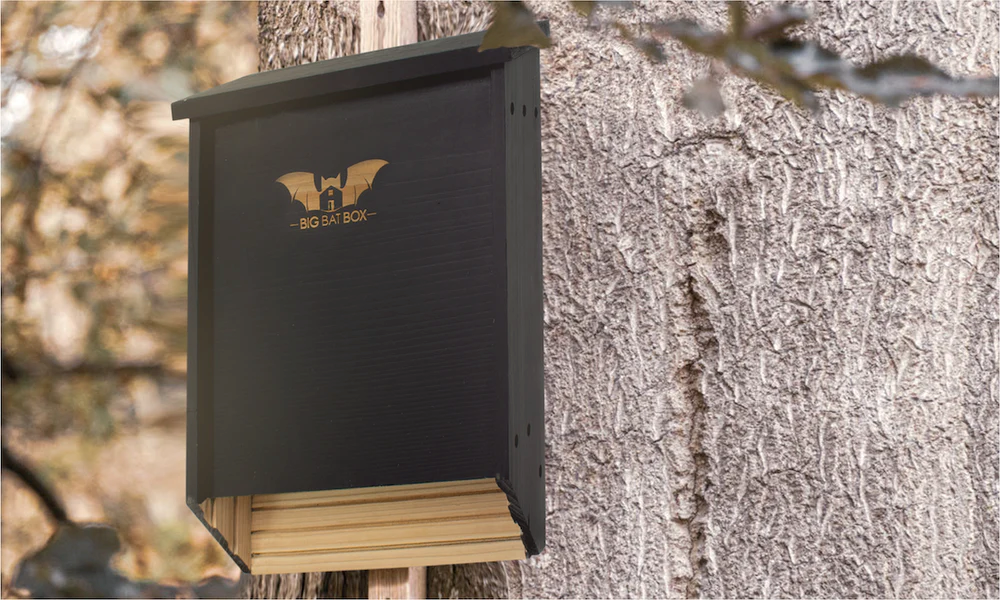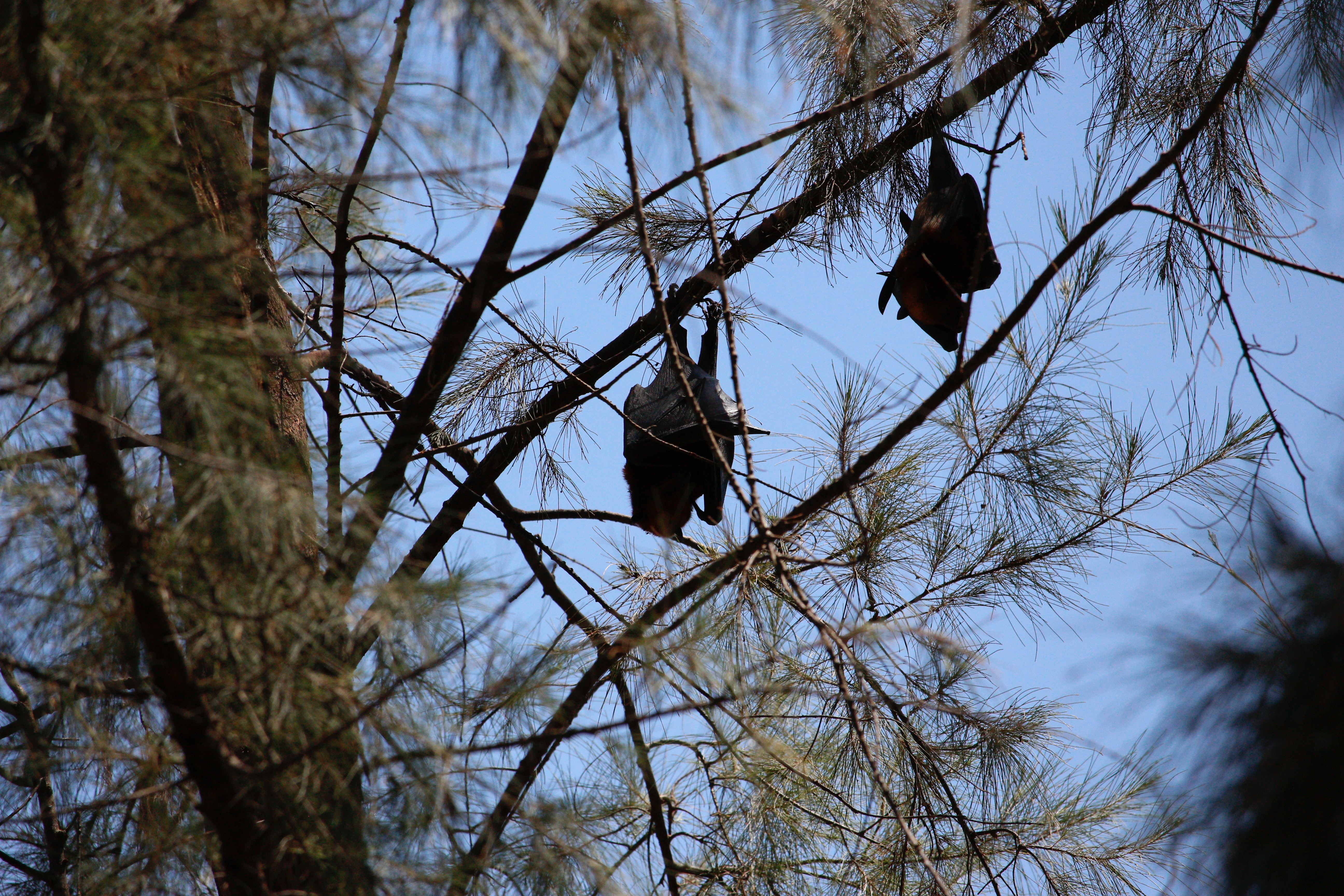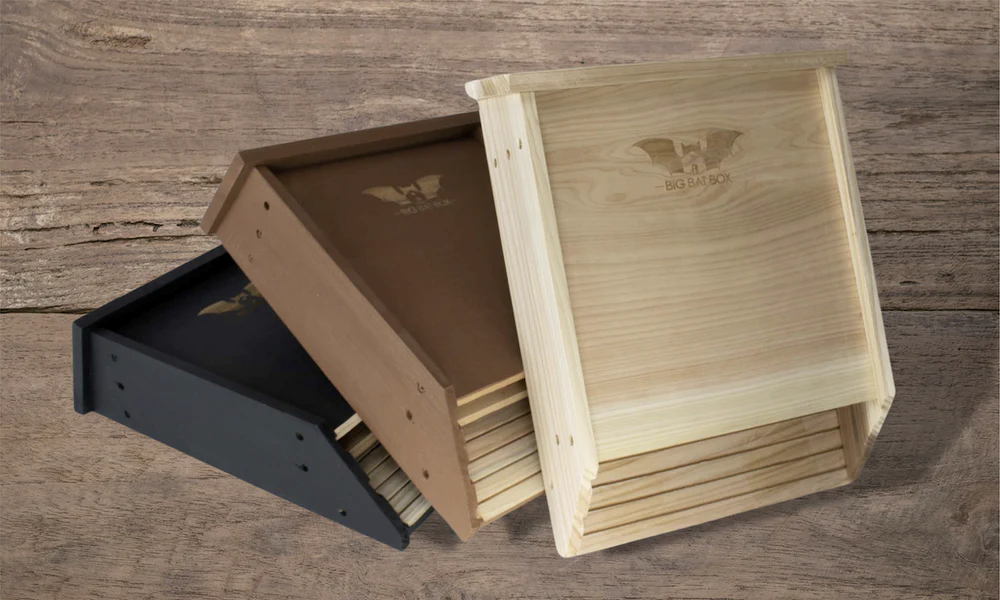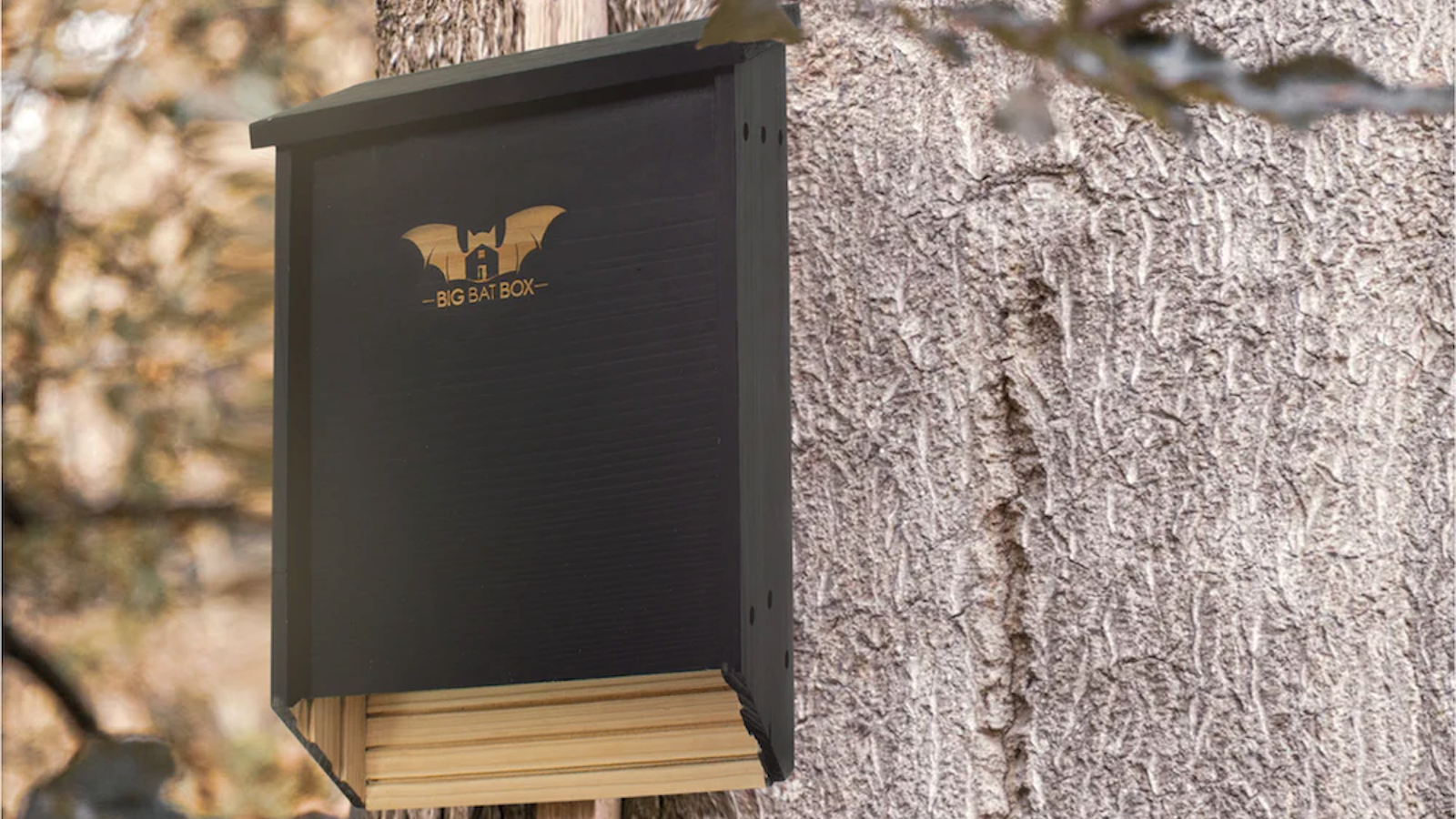Bats have long been stigmatized—many conservationists and enthusiasts would argue unfairly so. Incredibly, bats are the only true flying mammal. Like all creatures, they fill an important and unique niche in the ecosystem. While they are well-known insect hunters, bats are also unsung horticultural helpers—under-recognized for their pollination, seed dispersal and fertilization capabilities.
These nocturnal wonders have been around for an estimated 50 million years, and like too many species today are facing incredible stress from habitat loss and disease. Many bat species have now been pushed into the endangered category—dangerous territory for a creature that only births one pup per year.
While most don’t want bats in their own home, bats do deserve a home. In a recent interview with Kinute, Big Bat Box sat down to discuss the importance of bats, challenges they’re facing, and how humans can help this misunderstood mammal by providing a safe and separate place for them to roost.

Bats can fly up to 200 miles at a time, greatly contributing to seed dispersal and fertilization. Photo by Clément Falize | Unsplash
Q: Why are bats important?
A: Bats play three essential roles in the ecosystem: Pest control, natural fertilization and pollination.
Pest control: Bats are good for the diversity of the local life and the maintenance of food crops. They eat a considerable amount of crop pests such as moths, beetles, rootworms, leafhoppers or flies. This really helps maintain a balanced ecosystem.
They also feed from mosquitos, which apart from being quite annoying can potentially carry a huge number of diseases.
Natural fertilization: Bats’ poop happens to be very rich in nutrients and are commonly used as natural fertilizers. Their droppings are called guano. This contains the absolute ideal ratio of nutrients for plant growth. There’s also a great mix of bacteria and fungus in guano that helps keep soil healthy and vegetables, herbs, flowers, and fruit and nut trees will benefit from it.
Pollination: Several species of bats in tropical and subtropical areas of the Americas eat nectar. Many types of plants in these regions rely on bats for pollination and seed dispersal, such as the blue agave. This type of bat provides extensive value to the agricultural industry.
A bit related to the previous points, bats are also seed distributors. Some species eat fruits and they spread its seed unconsciously.
Overall bats are extremely beneficial to mankind.

A mounted Big Bat House. Courtesy of Big Bat Box
What is the current health of, and outlook for, bat populations today? What are the biggest challenges bats are currently facing?
More than 50% of bat species in the US are either in severe decline or listed as endangered. Sadly, many bat species around the world are vulnerable or endangered, some of the reasons behind this are loss and fragmentation of habitat, diminished food supply, destruction of roosts, disease or hunting.
If that wasn’t enough, bats are also at risk from an epidemic called white-nose syndrome. This has recently reached the US and despite not being transmitted to humans it has killed an estimated 5.7 million bats in North America causing a 90% decline among some species in certain areas.
Providing a house for bats can help them rebuild populations and really have an impact.
What is natural bat habitat and why are bat boxes important?
Bats can be found almost everywhere in the US. They tend to habit in a variety of daytime retreats like caves, trees, old buildings, mines, etc. Depending on the species they’ll require different roost sites.
Bats also live near water, preferably natural water. This behavior is especially notable in females and males taking care of their brood.
Most of the colonies are under 200 bats, that’s why our bat houses can fit up to that number. Bat boxes can simulate the habitat of a tree with the advantage of not having the bats exposed to predators. These play an important role allowing bats to roost in areas where they may not find suitable spots.
It’s important that bat boxes are made of wood and have no paint on the inside. Also, the color of the box has huge relevance. Bats look for the comfort of warmth especially when breeding. That’s why in cold areas it is recommended to install black boxes that help maintain the heat, whilst in warmer regions a cedar box will prevent the bats from overheating when resting inside.

Bats expose themselves to predators while sleeping. Photo by Jackie Chin | Unsplash
What are the benefits of having a bat box in your yard?
Insect/mosquito control: Bats can eat up to 1,200 insects per hour. Many bats can eat nearly 70% of their body weight in insects each night. That means your insect problem goes away once the bats start arriving. Once insects start hearing bats flying, they instantly start leaving the area. Bugs want absolutely nothing to do with bats. If you’re sick of bugs flying around your property and ruining your outdoor leisure time, then a bat house is what you need.
Pollinate plants: Bats are the original nighttime pollinators. While the bees handle the day shift, bats can actively help your garden grow in the evening. Bats are nocturnal animals. They do the majority of their work during the evening. The bats sweep through your garden eating up insects and nectar as they please. Then they leave pollen on your plants. Pollen and plants go hand-in-hand.
Save the bats: As bats play a huge role in our ecosystems, many have become bat conservationists. Save the bats is a movement for many nature enthusiasts, as the animals often get an unfair shake as violent creatures in the media. By installing a bat house, you give these animals a safe place to live and procreate. With all the natural habitats being destroyed today, this is incredibly important for the animals.

Bat houses in a variety of colors for heat control from Big Bat Box. Courtesy of Big Bat Box
Is there a risk to humans to encourage bat activity on residential property?
Bats are not aggressive unless feeling threatened. There are two main risks that despite very low affectation rates are worth mentioning. One of these is rabies, despite only about 5% of being infected. In the recent years, there has been increased concern about the risk of rabies transmission following contact with bats. Despite chances of getting rabies being very low it’s always recommended [to] not touch a bat with your bare hands.
The other potential risk is histoplasmosis which is an infection coming from the inhalation of bats droppings. Once again, the risk is low given that it takes a very big amount of droppings inhalation to be in real risk of getting infected.
These are very specific and remote risks that we wouldn't need to worry about as long as we deal with bats with normality.
What else can people do to encourage a healthy bat population?
Preventing bat’s habitat from being fragmented or destroyed is the best action we can take to encourage a healthy bat population. Invading its habitat and ruining their roosts are the main reason for bats to be endangered.
Are bats found in all U.S. states?
Yes, they can be found in all states being Texas the most bat populated state. It is home to 32 of the 47 bat species found in the US.

Courtesy of Big Bat Box
How are Big Bat houses designed to specifically encourage female bats?
Well, that starts before ever considering buying a bat house. The most important thing to attract bats is a natural source of water. If you live within 1,500 feet of a creek, stream, pond, river or lake bats will love living at your home.
Female bats refuse to live too far from water when nesting. When they’re nesting the males always follow and so do the baby bats. That’s how you can get a colony of up to 200 bats.
Without natural water you’ll be forced to stick with bachelor bat houses. While these can be exceptionally effective, you won’t find as many bats around without water.
Also, the box will need around 4-8 hours of natural sunlight each day. Bats need heat to raise their young, so bat mamas will only put a colony in a bat house that has a lot of natural light.
Paint color also plays a key role in attracting bats given its ability to absorb or deflect heat. And you should never paint inside the box as this would disturb them.
Big Bat boxes and houses are certified by Bat Conservation International. Why is this important?
Bat Conservation International tests bat houses and certifies the products that pass their rigorous testing procedures. If a bat house company is BCI-Certified, then you can expect any product you buy from them to offer a great chance at attracting bats. These products will be built properly and come with careful mounting instructions. BCI adheres to strict bat home construction guidelines that ensure a safe and comfortable roost for bats.
The Bat Conservation International (BCI) is the gold standard for bat houses. To be BCI certified, a bat house must meet certain criteria, including: the bat house must be at least two feet tall and 16 inches wide; the bat house must have at least 24 square feet of internal roosting space; the bat house must be made of durable materials that will withstand the elements; and the bat house must be designed to exclude non-target animals, such as squirrels and birds.
For more information about Big Bat Box, visit https://bigbatbox.com.
